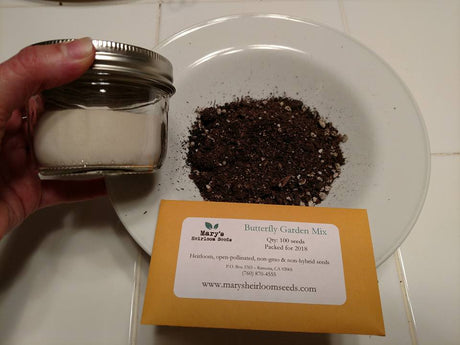
Making Seed Balls
Last week I had another amazing opportunity to volunteer at one of my favorite schools. The Sage School Garden invited Mary's Heirloom Seeds back for Earth Day Celebration and my...
Mary Smith |
Welcome to our store Learn more

Last week I had another amazing opportunity to volunteer at one of my favorite schools. The Sage School Garden invited Mary's Heirloom Seeds back for Earth Day Celebration and my...
Mary Smith |
Over 1,000 varieties of Heirloom Seeds
Free Shipping on Qualifying orders of $20 or more
Planting guides to help you grow a successful garden